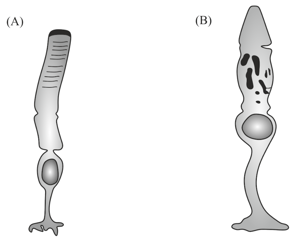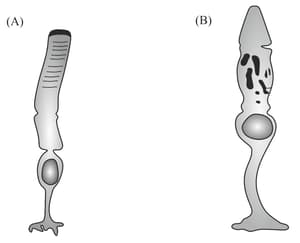MEDIUM
Earn 100
What are the functions of optic nerve?
Important Questions on Control and Co-ordination
MEDIUM
Match the number and name of following cranial nerves and select the correct option.
| Number | Name | ||
| a) | VIII | i) | Pathetic |
| b) | XI | ii) | Auditory |
| c) | IV | iii) | Vagus |
| d) | X | iv) | Spinal accessory |
EASY
Assertion (A): Abducens nerves are motor nerves.
Reason (R): They originate from the Pons Varolii and end in the lateral rectus muscle of the eyeball.
The correct option among the following is
HARD
Which is the group of motor cranial nerves of human being?
EASY
Fill the blanks in the statement.
"Three types of cone cells are present in human eye. This is due to the chänge in _____ in the Opsin molecule"
EASY
Observe the illustration and answer the following questions.

Explain the role of these cells in making vision possible.
EASY
Identify the mismatched pair.
EASY
Give names of cranial nerves VI and VII.
MEDIUM
The process that leads to the formation of impulses in photoreceptors is :
EASY
Observe the illustration and answer the following questions.

How impulses are generated in these cells when light rays fall on it?
HARD
Give the biological reasons for the following statement:
We cannot distinguish colours in dim light.
EASY
Why does one feel blinded for a short while coming out of a dark room?
EASY
Differentiate between the following pairs on the basis of what is mentioned within brackets:-
Rod cells and cone cells (pigment)
MEDIUM
Mention the functions of cones.
MEDIUM
Mention the function of rods.
EASY
Differentiate between rods and cones of the retina on the basis of the type of pigment present in them.
EASY
State one difference between the rods and cones.
EASY
Differentiate between rod cells and cone cells on the basis of pigment present in them.
HARD
Given below is set of five terms. Rewrite the terms in a logical sequence as directed at the end of each statement:
Pupil, Yellow Spot, Cornea, Lens, Aqueous Humour. (path of entry of light into the eye from an object).
HARD
Name the ability to perceive depth or the relative distance of the objects.
MEDIUM
What is visual purple?

